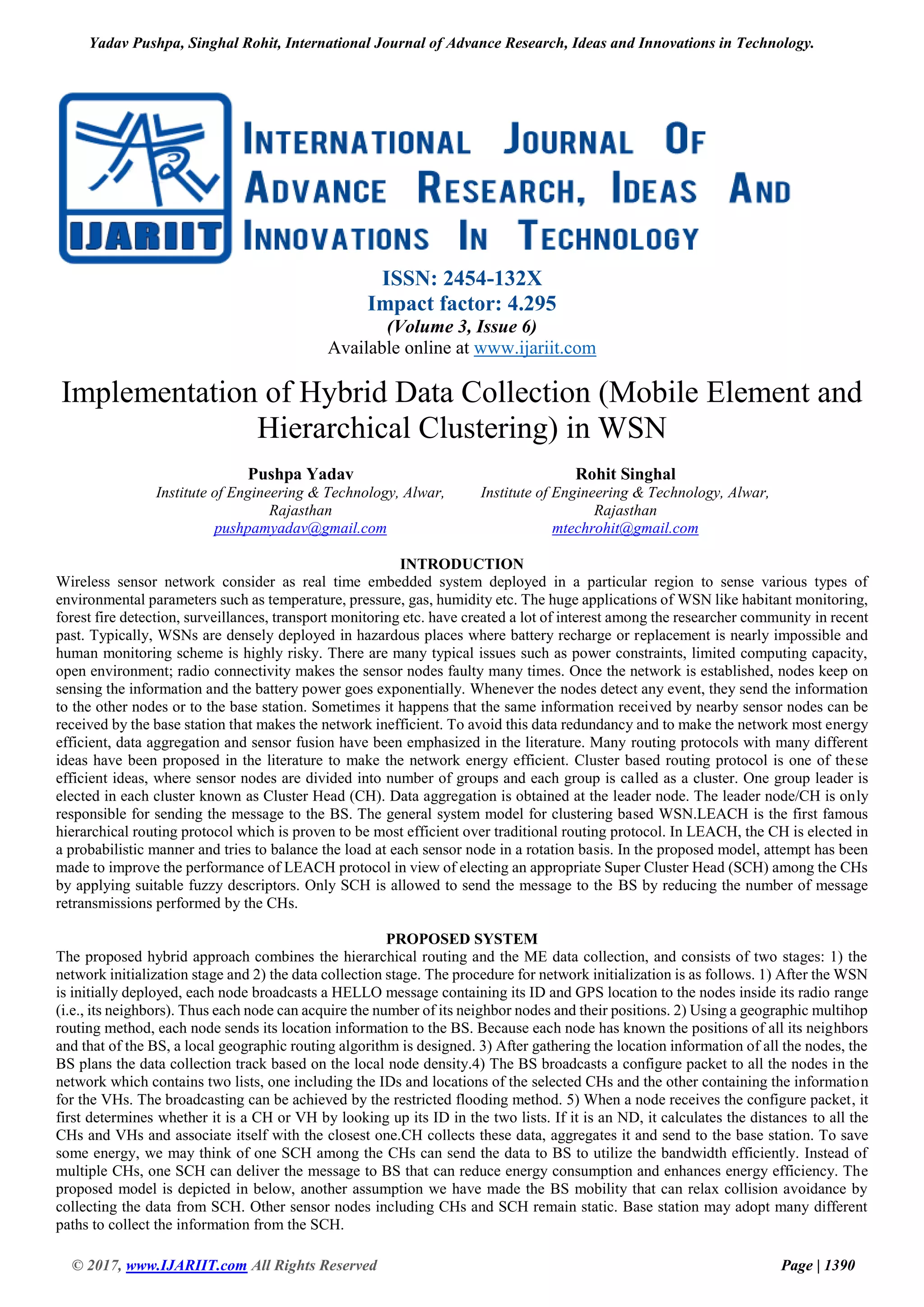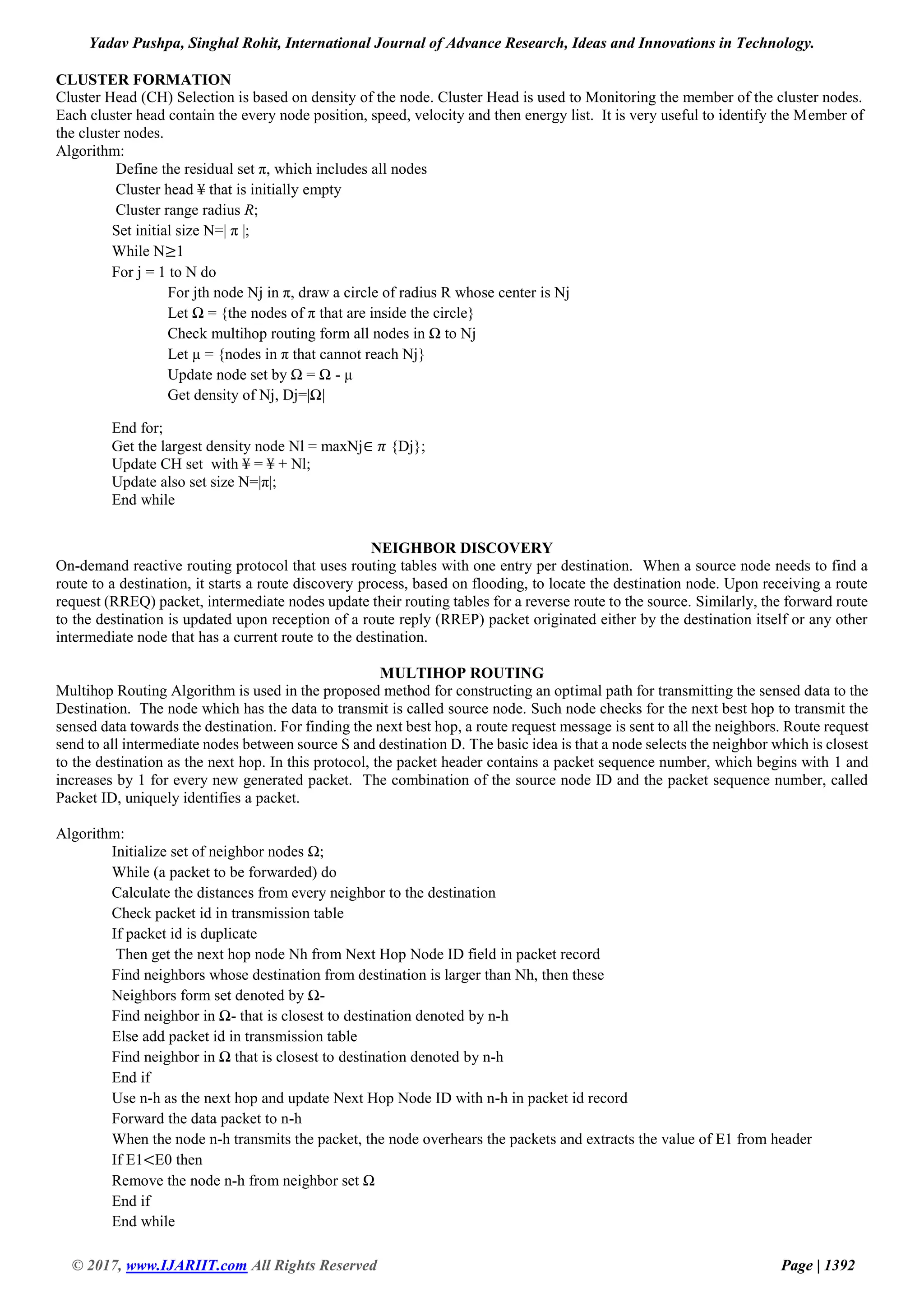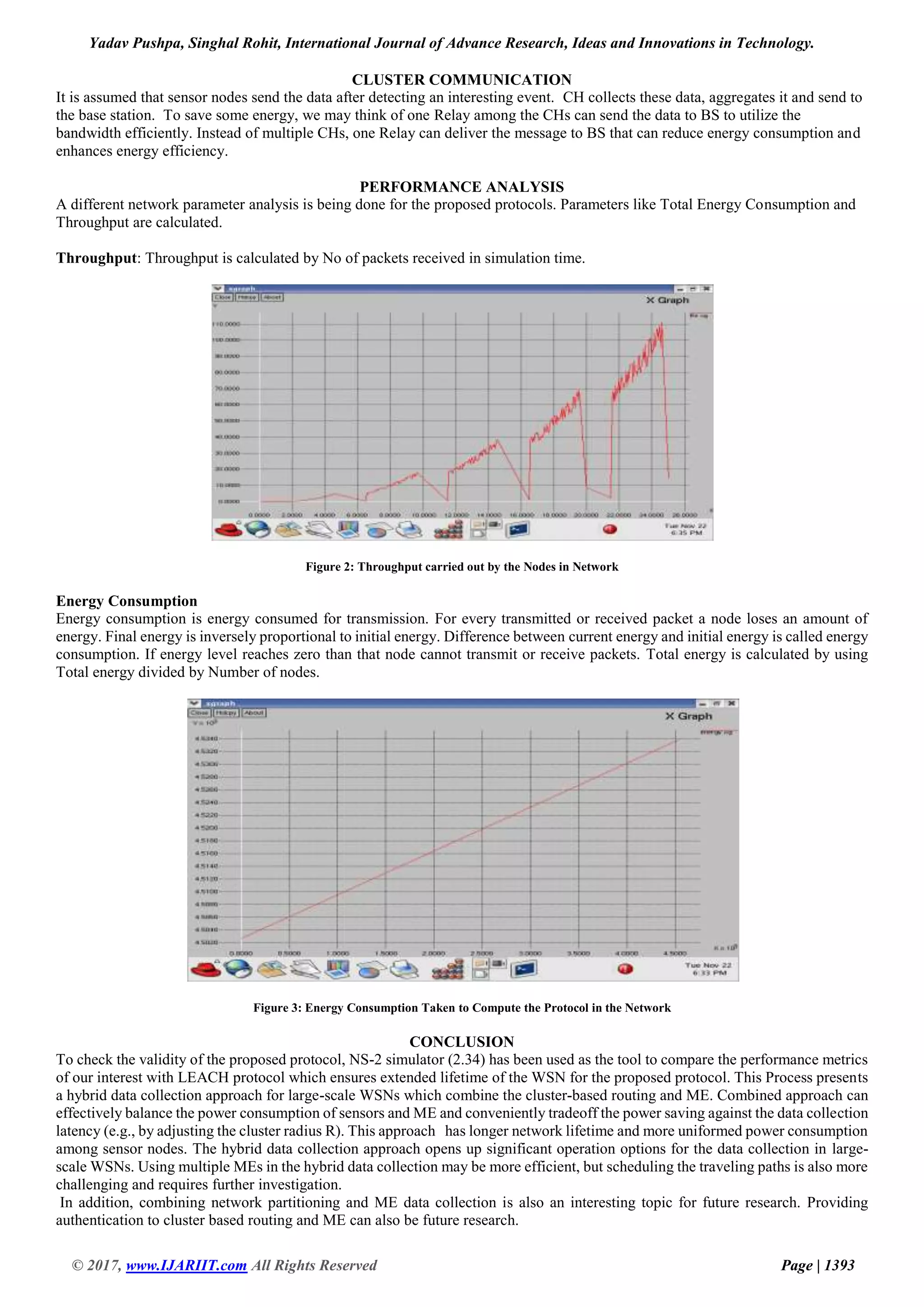The document presents a hybrid data collection approach in wireless sensor networks (WSNs) that combines mobile elements and hierarchical clustering to enhance energy efficiency and extend network lifetime. It discusses the implementation of a probabilistic cluster head selection and the introduction of a super cluster head to minimize data redundancy and message retransmissions. The proposed model demonstrates improved performance metrics such as reduced energy consumption and enhanced throughput compared to traditional routing protocols.




